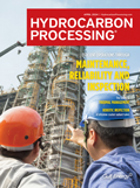December 2021
Process Optimization
Design and scale-up of gaseous Group A fluid bed systems for chemical synthesis
More than 100 fluid bed reactors for chemical synthesis and comparable processes using Group A powders have been installed and operated successfully since the late 1940s, with some reactors having an inside diameter at much larger than 7 m (23 ft).







Comments